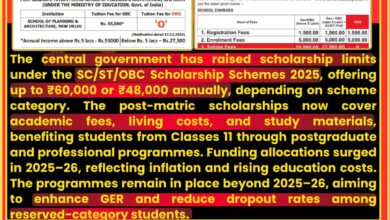
New Delhi: Union Health Minister JP Nadda announced the government’s target to set up 20,000 Jan Aushadhi Kendras by 2025, reinforcing Prime Minister Narendra Modi’s vision of affordable healthcare for all.
The Pradhan Mantri Bhartiya Jan Aushadhi Pariyojana (PMBJP) has played a crucial role in reducing the cost of medicines for millions of Indians, particularly low-income and rural populations. The expansion plan aims to improve medicine accessibility, lower healthcare expenses, and promote generic drug usage nationwide.
Key Highlights of the Announcement
✅ Target: 20,000 Jan Aushadhi Kendras by December 2025
✅ Current Status: Over 10,000 centers operational
✅ Objective: Provide high-quality generic medicines at 50-90% lower prices
✅ Implementation: Strengthen the supply chain, increase outreach, and raise awareness
✅ Impact: Millions to benefit from cost-effective healthcare solutions
What is the Jan Aushadhi Scheme?
The Pradhan Mantri Bhartiya Jan Aushadhi Pariyojana (PMBJP) was launched to ensure the availability of quality generic medicines at affordable prices through a network of Jan Aushadhi Kendras. These government-run pharmacies sell medicines at a fraction of the price compared to branded alternatives, reducing the financial burden on patients, especially in rural and underserved areas.
Minister JP Nadda’s Statement
📢 Union Health Minister JP Nadda stated:
“By expanding Jan Aushadhi Kendras to 20,000 by 2025, we are ensuring that every citizen has access to affordable medicines. The government is committed to strengthening the healthcare system, reducing medical costs, and promoting generic drug usage across India.”
Affordable Medicines for a Healthier India
With healthcare costs rising, generic medicines play a crucial role in making treatments affordable. Jan Aushadhi stores sell over 1,800 medicines and 280 surgical products covering chronic diseases, antibiotics, painkillers, and essential drugs.
How Jan Aushadhi Kendras Benefit the Public
✔️ Savings: Medicines are available at 50-90% lower prices than market rates.
✔️ Accessibility: Centers are opening in rural and urban areas to reach every citizen.
✔️ Quality Assurance: All medicines undergo stringent quality checks by the government.
✔️ Employment Opportunities: Each center generates jobs for pharmacists and healthcare workers.
Expansion Strategy: More Centers, Better Supply Chains
To achieve the 20,000-center goal, the government is focusing on:
🔹 Increasing Outreach: Encouraging entrepreneurs, NGOs, and private players to open more Jan Aushadhi Kendras.
🔹 Strengthening Distribution: Ensuring timely supply of medicines by expanding warehousing and logistics networks.
🔹 Awareness Campaigns: Educating people on the benefits and effectiveness of generic medicines.
🔹 Financial Support: Offering subsidies and incentives to individuals opening new stores.
Public Response & Success Stories
Since its inception, the PMBJP initiative has saved citizens thousands of crores in medical expenses. Patients suffering from diabetes, hypertension, cardiac diseases, and infections have found affordable alternatives to expensive branded drugs.
💬 Patient Testimonial:
“I used to spend ₹3,000 per month on diabetes medication. Thanks to Jan Aushadhi Kendras, I now get the same medicines for ₹800. It has changed my life!” – Rajesh Kumar, New Delhi
💬 Pharmacist’s View:
“These centers not only provide affordable medicines but also educate people on the importance of generic drugs. Many customers now trust these medicines as much as branded ones.” – Dr. Shweta Rao, Pharmacist, Chennai
Challenges & the Road Ahead
While the Jan Aushadhi initiative has seen massive success, certain challenges remain:
⚠️ Awareness Gap: Many people still prefer branded medicines, assuming they are superior.
⚠️ Limited Rural Reach: Some remote areas lack proper infrastructure to open new centers.
⚠️ Logistics & Supply Issues: Ensuring timely delivery of medicines remains a hurdle in some regions.
To address these, the government is focusing on aggressive awareness campaigns, expanding digital health solutions, and partnering with local healthcare providers.
Conclusion: A Game-Changer for India’s Healthcare System
With the government’s commitment to opening 20,000 Jan Aushadhi Kendras by 2025, India is taking a significant step toward affordable and accessible healthcare. By promoting generic medicines, reducing treatment costs, and improving availability, this initiative is transforming lives and reinforcing the vision of ‘Health for All’.
As the Jan Aushadhi network expands, millions will benefit from cost-effective treatments, ensuring that no one is deprived of healthcare due to high medicine costs.










